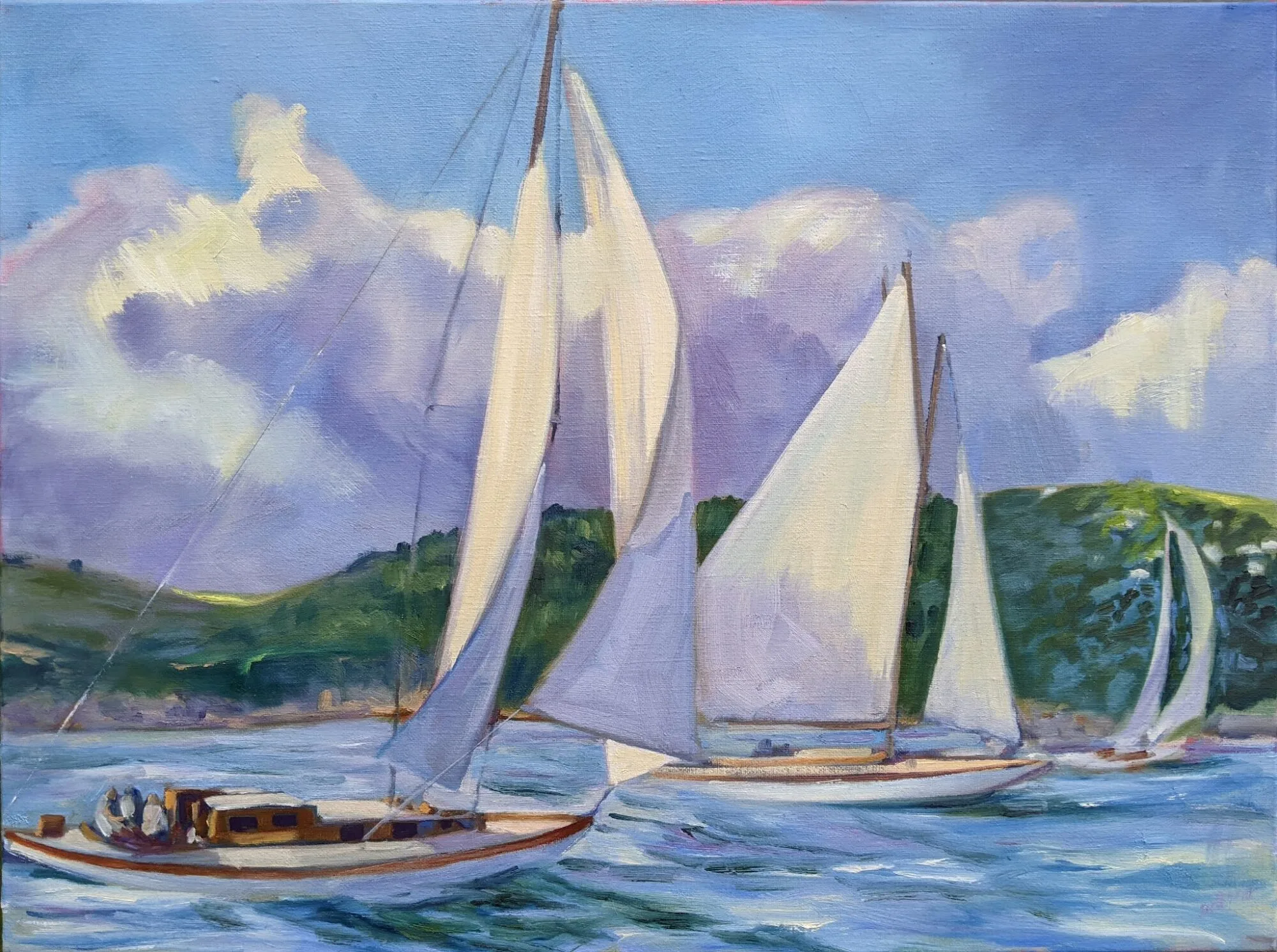 |
| “Under a milky sky (Hare Bay, Newfoundland),” Carol L. Douglas |
I’m happy to announce that as of today, Watch Me Paintreturns to Blogspot. I’d like to thank the Bangor Daily News for the past 17 months of hosting. It’s been a great learning experience, and there are many fine blogs on that platform that I read every day.
Astute readers may have noticed that Watch Me Paint has appeared on several platforms for the past five months. This was market research. The modern internet gives us analytic tools simple enough even for an artist to use. I know who visits my website and where they come from. That information supports what the experts say: when all else is equal, host your own blog. It gives you total control of your brand.
My students have heard me speak of group norming in terms of painting. This is when artists who work closely together influence each other’s style. This is the process by which a painting group becomes a ‘school’. It can be a powerful tool for creating new art movements, or it can be repressive.
For painters, it’s important to find working partners interested in the same questions as you are. That doesn’t mean your work will always look the same. For example, even though he was a founding member of the Group of Seven, Lawren Harris ended up being an abstract painter.
Here in Maine, we haven’t been doing much outdoor group painting recently. Meanwhile, my old friends in Rochester have been out every week. They’re having a rare, snowless winter. So I jumped when Bobbi Heath and Joëlle Feldman invited me to join them to paint in the Bahamas next month. Both of them are interested in the same fundamental questions I am: drawing, color relationships and the simplification of landscape. I expect that tropical climate has far different light than I’m used to, and am going to bring a few pigments that I don’t usually use.
I’m committed to finishing my backlog of Canada paintings before we head out. I’m making slow progress, but I’m starting with the least-finished pieces first.
| “Grain Elevators, Saskatchewan,” Carol L. Douglas |
Yesterday I worked on a painting started in the tiny village of Hare Bay on the northeast coast of Newfoundland. Hurricane Matthew was moving in. There was a milky sky in the deep gloom of fading light. The lighting seemed to fit the mood of this small, poor, isolated town tucked in under an enormous rocky ledge. It wasn’t until I picked it up again in my studio that I felt the oppressive emptiness of the harbor.
The other painting is of a grain elevator in Neelby, Saskatchewan. This was started in a ghost town now owned by rancher Gordon Kish. Again, the light was fading. There is something immensely silent in that hour before twilight, when the shadows are long and every detail is picked out by the searchlight sun. And yet my painting is hardly still. Who knows why?
This morning it’s 12° F in Neelby and 15° F in Hare Bay. While I love field painting more than anything, there’s a time for central heating, too.






